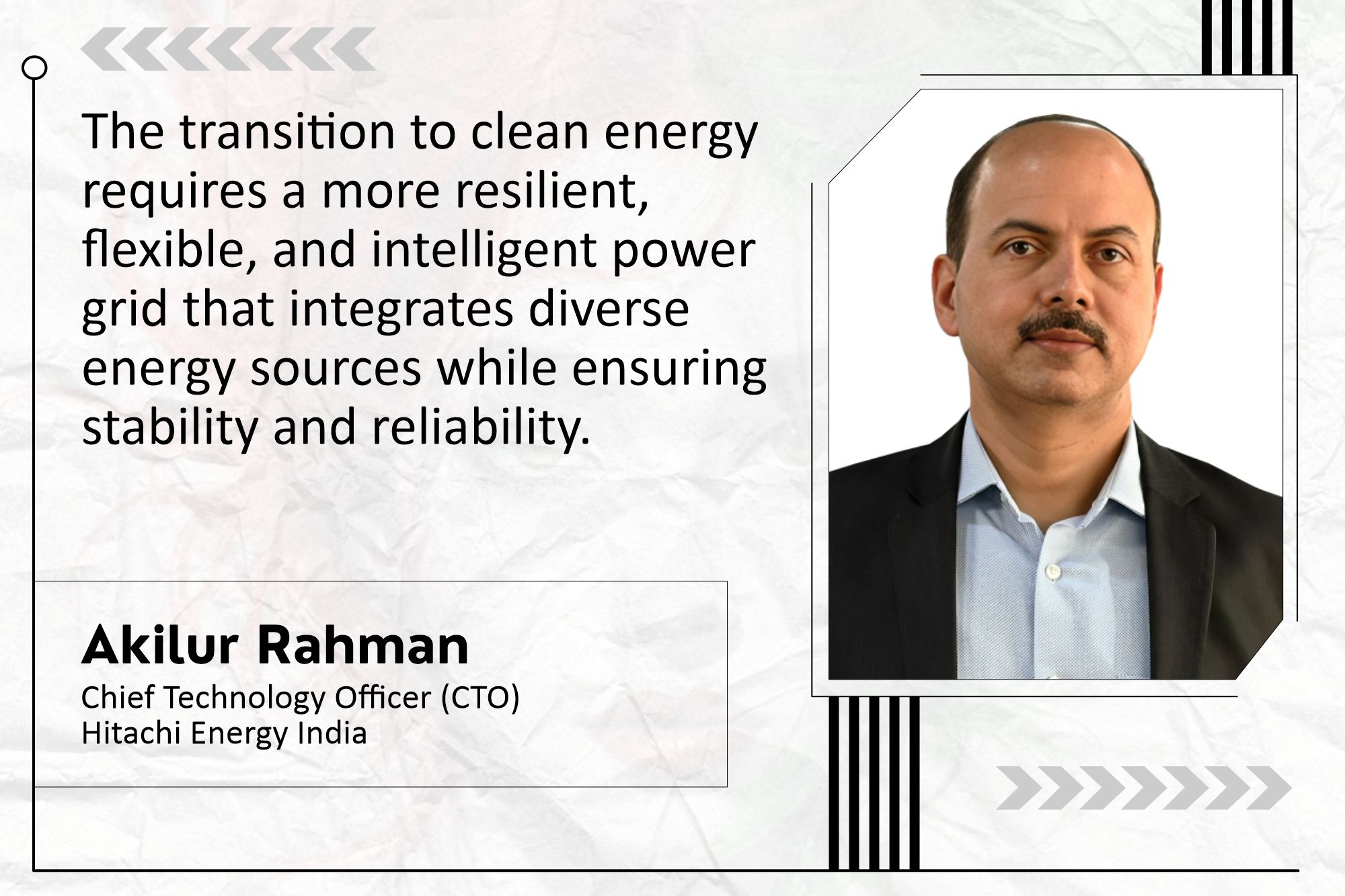Hitachi Energy building a future-ready grid with its digital solutions
By EPR Magazine Editorial March 25, 2025 5:13 pm IST
By EPR Magazine Editorial March 25, 2025 5:13 pm IST

Technologies such as Flexible AC Transmission Systems (FACTS), High-Voltage Direct Current (HVDC) transmission, digital substations, energy storage, and grid automation and digitalisation solutions are becoming essential for seamlessly transmitting and integrating renewable energy across the country.
India’s renewable energy boost demands a resilient, intelligent power grid that integrates diverse sources while ensuring stability. Akilur Rahman from Hitachi Energy India shares how the company offers innovative solutions to support grid modernisation.
How does the demand for advanced electrical equipment and digital technologies enhance India’s power grid resilience and operational efficiency?
As India accelerates its renewable energy adoption, the demand for advanced electrical equipment has never been more critical. The transition to clean energy requires a more resilient, flexible, and intelligent power grid that integrates diverse energy sources while ensuring stability and reliability. Technologies such as Flexible AC Transmission Systems (FACTS), High Voltage Direct Current (HVDC) transmission, digital substations, energy storage and grid automation and digitalisation solutions are becoming essential for seamlessly transmitting and integrating renewable energy across the country. At Hitachi Energy, we are committed to providing innovative solutions that support India’s energy transition, ensuring grid resilience while maximising efficiency and sustainability.
Moreover, digitalisation is at the heart of modernising power infrastructure in the country. As the grid evolves to accommodate increasing renewable energy penetration, digital technologies such as IoT, AI, and predictive maintenance will enhance efficiency, reliability, and operational agility. AI-driven analytics enable energy forecasting and predictive-prescriptive maintenance, reducing unplanned outages and optimising asset performance. IoT-connected devices provide real-time insights, helping utilities make data-driven decisions, while advanced automation enhances grid resilience. The company’s software portfolio and digital solutions empower utilities and industries to build a future-ready grid that is intelligent, sustainable and responsive to evolving energy needs.
How is the PLI scheme impacting the local electrical equipment manufacturing, and what steps are being taken to reduce dependency on imports?
The sectoral PLI scheme, covering 14 sectors, is designed to reduce import dependency and bolster domestic manufacturing. The government offers $4-5 billion in incentives for electronics and electrical equipment manufacturers while imposing import restrictions on key products like laptops and PC parts. The initiative has attracted significant investments, boosted production capacity and generated employment, positioning India as a global manufacturing hub.
The power transmission sector and critical transmission equipment have yet to benefit from a dedicated PLI scheme. However, combined with OEMs’ investments in expanding their footprint—whether through greenfield or brownfield projects—localised manufacturing of critical components, including power electronics-based modules, is being enhanced for both India and global markets.
The recently announced Union Budget for the fiscal year 2025 has placed significant emphasis on the “Manufacturing Mission – Furthering Make in India”, with a special focus on “Clean-Tech Manufacturing”, including “very high voltage transmission requirements.” The details of this mission and its benefits will align with the broader vision of “Vikshit Bharat – A Self-Reliant India.”
What challenges does India face in scaling high-voltage transmission infrastructure, and how can advanced grid solutions ensure seamless renewable integration?India’s rapid expansion of renewable energy capacity brings significant challenges in strengthening high-voltage transmission and distribution networks to ensure seamless grid integration. Scaling up infrastructure to accommodate intermittent renewable energy sources requires substantial investment in flexible and resilient T&D systems.
Key challenges include grid congestion requiring advanced balancing technologies, land acquisition for new transmission corridors and ensuring continuous visibility and accurate predictability of equipment and system needs to meet 2030 targets.
Solutions such as HVDC transmission, digital substations, demand-response systems, and digital grid solutions are critical to overcoming these hurdles. Hitachi Energy remains at the forefront of developing cutting-edge grid solutions that support ambitious energy transition while ensuring country grid stability and reliability.
How is the energy storage sector evolving to support efficient energy management and grid stability?
Grid-scale storage is crucial for stabilising renewable energy supply, ensuring reliability and reducing outages. As India expands its renewable capacity, the need for efficient storage solutions is growing. The country is actively developing domestic battery manufacturing, with major players like Reliance investing in production to meet future energy demands.
Additionally, Hitachi Energy’s acquisition of Eks Energy strengthens India’s storage capabilities with advanced power electronics solutions, enhancing grid stability and accelerating the transition to clean energy.
Recycling initiatives for used batteries are also gaining traction. These initiatives minimise environmental impact and reduce Reliance on imported raw materials. Collectively, these efforts support a more sustainable and resilient energy ecosystem.
We use cookies to personalize your experience. By continuing to visit this website you agree to our Terms & Conditions, Privacy Policy and Cookie Policy.